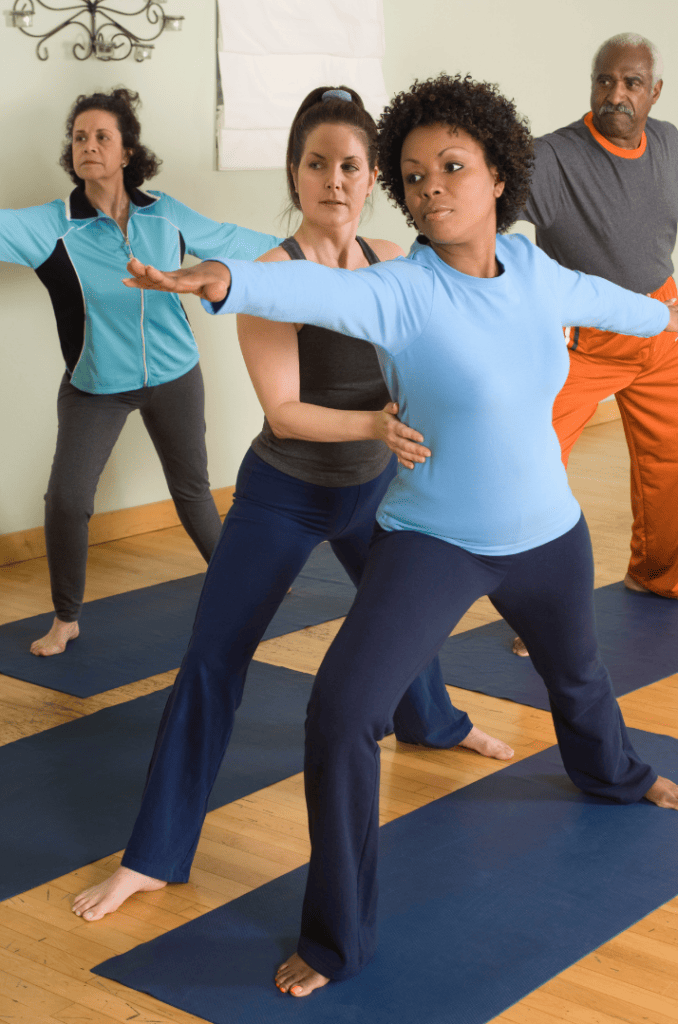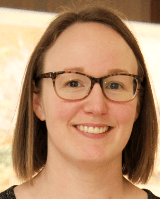Osteoporosis Canada is saddened to announce the passing of Dr. Timothy M. Murray, founding member of Osteoporosis Canada.
Dr. Murray was the Emeritus Professor of Medicine at the University of Toronto, past Director of the Toronto CaMos Centre and past Director of the Metabolic Bone Clinic at St. Michael’s Hospital, Toronto. He played an active role in the American Society of Bone and Mineral Research and the International Society of Clinical Densitometry. He was awarded the Order of Canada in 2007 for his significant contributions to osteoporosis research and education in Canada.
Without Dr. Murray, Osteoporosis Canada would not be the organization it is today.
Through the 1970’s, Dr. Murray was a physician scientist at St. Michael’s Hospital in Toronto researching fundamental bone science. He started the first Metabolic Bone Clinic in Canada at St. Michael’s Hospital in 1981 bringing together people who were already suffering from the acute pain and deformity of osteoporosis, mostly elderly women. During this time the treatment and care for patients was still undeveloped. Dr. Murray’s team worked to develop the medical procedures and facilities together with patients who were also passionately motivated to support the cause.
These patients were women who were extremely determined despite their burden of pain. They were convinced that through their efforts and initiative they could affect change. They supported the physicians and researchers by drawing public awareness to the ravages of the disease, by raising money for research and by supporting each other. Ultimately, this group of women formed an army of volunteers across the country – strong and committed. Some of the key people were Eleanor Mills and Lindy Fraser.
Volunteers convinced newspaper columnists to take their osteoporosis story to the general public. Before long, eye catching headlines appeared such as Silent Thief will Rob Our Bones of Calcium, Fighting Back: A walk for all of Canada and Wealthy Women Should do More to Support Research. In the latter article, Dr. Murray was asked why osteoporosis had received so little attention. He responded, “It gets overlooked because of ageism and sexism.” In response the writer worte, “I was startled. Dr. Murray sounds like a conscious scientific type, not the sort given to the lingo of social change.”
During this time, Dr. Murray together with Dr. Joan Harrison and his clinic staff were thinking about how they could maximize their efforts. One morning Dr. Murray boarded the bus on the way to work and got into a conversation with a new neighbor – a lawyer named Michael Slant. When Dr. Murray told him of his involvement in the field of osteoporosis, Mr. Slant said he immediately knew what Dr. Murray was talking about and he expressed interest. Dr. Murray further shared the difficulties of finding funding for research. Mr. Slant immediately said a society was needed.
As a result of the chance meeting between these two gentleman, the process began to form The Osteoporosis Society of Canada. The work to create the society was done in Dr. Murray’s living room and in October 1982 The Osteoporosis Society of Canada ultimately received its charitable status.
Since 1982, Osteoporosis Canada – the current name of the organization, has grown exponentially and made a significant impact in the areas of bone health and osteoporosis largely due to Dr. Murray. Given the groundbreaking work done in Canada, Dr. Murray who also was asked to consult on the formation of an osteoporosis organization in the United States. And before long, similar organizations started appearing in other countries.
Led by the passion and commitment of Dr. Murray, Dr. Joan Harrison and others, Canadians initiated an international movement in osteoporosis. It was a model of which we can all be proud.
The Osteoporosis Canada family extends it heartfelt condolences to Dr. Murray’s wife Joan, their children Peter and Laura; grandchildren Joe and Clara and their entire family.
You can view the obituary for Timothy MacLeod Murray M.D. here
http://www.blairandson.com/book-of-memories/3962035/Murray-MD-Timothy/obituary.php
TRIBUTES
It is with great sadness but with pride and nostalgic remembrance that I write a few words about Dr Timothy Murray (emeritus professor of medicine) who passed away on August 27. He was my mentor and subsequently my professional colleague and friend for over 30 years. He played a pivotal role in endocrinology and metabolism (E&M) in Toronto and indeed in Canada especially in his chosen area in endocrinology of metabolic bone disease and calcium metabolism.
His research ability and expertise was initially developed at the Massachusetts General Hospital where later he was a visiting scientist both there and at the NIH. He developed an early radioimmunoassay for PTH and his laboratory at the University of Toronto focused on studies on PTH action, on intestinal calcium binding protein, on hormone receptor expression and on osteoblast cell function.
At the clinical level, at St Michael’s Hospital (where he was head of the division of E&M) he was involved in clinical drug trials in osteoporosis. He was one of the founding directors (Toronto site) of the Canadian Multicentre Osteoporosis Study (CaMos). In both areas of research (basic and clinical) he was a pioneer in Canada. He had a very productive, noteworthy and illustrious career.
He was also a very accomplished clinician and teacher and developed the first osteoporosis clinic in Canada. He was the founding director of the Bone and Mineral group at the University of Toronto through which a generation of scientists, clinicians and osteoporosis specialists were trained.
He played a leading role in patient advocacy for osteoporosis and together with Dr. Joan Harrison founded the Osteoporosis Society of Canada (now Osteoporosis Canada) in 1981. He was instrumental in seeing it grow and flourish in leadership positions for many years.
He was an exemplar for the younger generation of physicians and scientists to emulate. He had broad interests outside medicine. He was a talented pianist both jazz and classical. He once told me he helped work his way through medical school playing the piano with Grays anatomy on his lap.
He had many friends in Canada and abroad and will be missed but well remembered as a man of integrity, charm and humor who was so accomplished and such a gentleman.
– Robert G. Josse, MD, FRCP, FRCPC, FACP, FACE University of Toronto
Very saddened to hear about the passing of Tim Murray.
Tim was a research “renaissance” man having made very significant contributions to basic science, particularly in the area of parathyroid hormone, and then, equally significant contributions to clinical research, especially in the area of osteoporosis. He was also a fine clinician, a real gentleman, and a passionate musician.
Tim touched many people who are better for having known him and experienced his friendship. His passing has increased the void in the type of clinician scientist he represented.
He will certainly be missed.
– David Goltzman, MD, FRCPC McGill University
Like all of us, I’m very sad to hear the news of Tim’s passing. As Dr. Goltzman points out, Tim excelled as a dedicated scientist, teacher, and clinician, and was an even finer person.
I first met Tim when I was an MRC research fellow working on parathyroid hormone in Chicago, and he has been a mentor and friend ever since I returned to Canada. As the first Chair of the Medical Advisory Board of the Osteoporosis Society of Canada, he invited me to join in 1983. He organized and chaired the Osteoporosis Society of Canada’s first national consensus conference on osteoporosis, and these conferences evolved into the Osteoporosis Canada Guidelines, the 4th iteration of which are now being prepared.
His musical skills were amazing, and one of my great regrets was never getting to hear the Tim Murray Jazz Quintet in concert. At the meeting to initiate the Canadian Multicentre Osteoporosis Study (CaMOS) held at the Banff Centre in the late 1990’s, we did have the opportunity to observe his virtuosity, albeit on an old, slightly out-of-tune piano.
My condolences to his family.
– David A. Hanley, MD, FRCPC University of Calgary
About Tim Murray.
I have been thinking about Tim recently and wanting to share with him my recent review of progesterone and bone (Climacteric 2018). And now it is too late.
I was a new comer to British Columbia and UBC in the late 1970s, worked with some renal experts here (Drs. Bert Cameron and the Roger Sutton) on bone health issues and became an advisor to O-STOP, the home-grown osteoporosis self-help group. I therefore knew about the first osteoporosis guidelines project in Canada in the 1980s. And I wished I’d been invited.
I later ran into Tim at the American Society for Bone and Mineral Research meeting—I can’t remember where we were, but we chatting in the sun, there was a sudden downpour and we hid under the same tree! I started cautiously telling him about my idea that progesterone was important for women’s bone formation. He was quite clear in rejecting that notion. I felt hurt.
However, after my 1-year observational study was published in the New England Journal of Medicine in 1990 he sought me out. That study, in 66 normally ovulatory, healthy young women observed over one year had cycles that remained regular but for many, ovulation became disturbed. We found that 20% of cancellous spinal BMD change was related to mean luteal phase length.
He contacted me, asking me more about my research. He invited me to the next OC guidelines conference.
I later worked with him in the early years of the Canadian Multicentre Osteoporosis Study (CaMos)—his and my centres had the slowest and most difficult time in recruitment. One year, when we had our annual CaMos Meeting in Banff, on a night after dinner with deep mountain darkness outside we stood around a piano in a lovely light wood hall listening to his amazing keyboards and singing Jerusalem.
Miss you Tim!
– Jerilynn C. Prior, MD, FRCPC University of British Columbia
Very sad news.
Tim was not only a talented scientist and musician but he was an outstanding mentor and gentleman. I remember my first SAC meeting in 1984 when he gave me the opportunity to join the OC circle and his continuous support during my closer involvement with OC.
There are only few people like Tim, that you have the chance to meet and interact with in a lifetime.
– Jacques Brown, MD, FRCPC Université Laval







 Although I have been a volunteer with Osteoporosis Canada for nearly two decades now, I can say this is the most amazing visibility I’ve seen the disease receive. To have osteoporosis brought literally centre stage in such an artistic and moving way was truly special to witness.
Although I have been a volunteer with Osteoporosis Canada for nearly two decades now, I can say this is the most amazing visibility I’ve seen the disease receive. To have osteoporosis brought literally centre stage in such an artistic and moving way was truly special to witness.